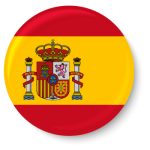
Spain vs Latvia: A Comprehensive Comparison
When it comes to comparing countries, Spain and Latvia may not be the first two that come to mind. However, these two European nations have their own unique qualities that set them apart. In this comprehensive comparison, we will delve into the differences and similarities between Spain and Latvia.
Geographic and Climate Contrast
Nestled in the southwestern corridor of Europe, Spain showcases a topographical palette that includes the sun-drenched beaches of the Costa del Sol, the rugged peaks of the Pyrenees, and the arid landscapes of the Meseta plateau. This variety supports a Mediterranean climate in the south and central regions, characterized by hot summers and mild winters, transitioning to a more temperate oceanic climate in the north. Conversely, Latvia, positioned at the northeastern edge of Europe along the Baltic Sea, presents a more uniform landscape dominated by flat plains, rolling hills, and vast forests that cover approximately half of the country. Latvia’s climate is predominantly humid continental, marked by significant seasonal temperature variations—warm, sometimes wet summers and considerably cold winters, with the coastal areas experiencing milder conditions. This stark climatic divergence profoundly influences each country’s natural biodiversity, agricultural practices, and the lifestyle choices of its inhabitants. While Spain enjoys extended growing seasons that support a rich variety of fruits and vegetables, Latvia’s shorter summer months concentrate on hardy crops and a focus on forestry. The geographic and climate contrasts between Spain and Latvia relation not only define their physical environments but also shape the cultural and recreational activities available, from Spain’s outdoor cafés and beach resorts to Latvia’s winter sports and midsummer festivities.

Cultural Heritage and Languages Spoken
The cultural tapestry of Spain is rich and diverse, woven through centuries of Roman, Moorish, and Celtic influences, amongst others. This historical blend is visible in its arts, architecture, and celebrated customs, such as the passionate flamenco music and dance, and the vibrant, often flamboyant festivals that mark the Spanish calendar, from the tomato-hurling frenzy of La Tomatina to the solemn processions of Semana Santa. Spanish, a global language, serves as the lingua franca, yet regional languages like Catalan, Basque, and Galician flourish, underscoring the country’s regional diversity.
In contrast, Latvia’s cultural essence is deeply rooted in its folk traditions and the Latvian language, an ancient tongue belonging to the Baltic language group, which provides a direct connection to the early Latvian way of life. Latvian culture is marked by its folk songs (dainas), traditional dances, and the celebration of Jāņi, a midsummer festival that vividly showcases the nation’s pagan heritage. The Latvian language, alongside Russian, used by a significant portion of the population, plays a crucial role in maintaining and expressing the country’s unique identity, especially given its relatively small size on the global stage. This juxtaposition of cultures and languages between Spain and Latvia highlights not only their historical paths but also their distinct approaches to preserving and celebrating their heritage in the modern era.
Economic Landscape and Employment Opportunities
The economic landscape of Spain is vibrant and multifaceted, with its GDP being significantly bolstered by the tourism sector, which attracts millions of international visitors annually. Additionally, Spain’s economy benefits from a strong agricultural sector, thanks to its favorable climate, and a robust manufacturing industry, particularly in automotive and fashion. Spain’s diverse economy provides a broad spectrum of employment opportunities, ranging from hospitality and services to technology and renewable energy sectors. However, it is important to note that while there are many opportunities, the job market is competitive, and the cost of living, especially in major cities like Madrid and Barcelona, can be high.
Latvia, although smaller in economic size compared to Spain, has demonstrated remarkable growth, particularly in the information technology and telecommunications sectors. Its strategic location as a Baltic state makes it a critical player in trade and logistics within Northern Europe. The financial services sector also plays a crucial role in Latvia’s economy, with Riga becoming a growing hub for startups and innovation. Employment opportunities in Latvia are increasingly found in these burgeoning sectors, with a growing demand for skilled professionals. The cost of living in Latvia is generally lower than in Spain, making it an attractive option for expatriates and locals alike. The country’s focus on technology and innovation has paved the way for a dynamic job market, particularly for those in the tech industry.
Culinary Traditions and Food Preferences
The culinary scene in Spain and Latvia offers a fascinating glimpse into their cultural identities, with each country boasting distinctive dishes that reflect their historical and geographical influences. In Spain, the diet is heavily inspired by the Mediterranean, featuring an abundance of olives, wine, and seafood, giving rise to signature dishes like the world-famous paella, a saffron-infused rice dish that often includes a variety of seafood or meats. Tapas, small plates of appetizers or snacks, embody the Spanish social culture, encouraging communal dining and a vibrant social scene. In contrast, Latvian cuisine is rooted in its agricultural heritage, offering a selection of comfort foods that are perfect for the colder climate. Traditional Latvian meals are typically hearty and filling, with dishes such as rupjmaize (dark rye bread), and cold beet soup. The culinary tradition in Latvia also showcases a strong preference for locally sourced ingredients, including berries, mushrooms, and meats, particularly pork, emphasizing the connection to the land and seasons.
Both countries celebrate their culinary traditions through festivals and gastronomic events that highlight their food preferences and cooking methods, offering a delicious entry point into their cultures for locals and visitors alike. Whether sampling tapas on a bustling street in Madrid or enjoying a plate of speķapīrāgi during a Latvian festival, the flavors of Spain and Latvia are as inviting as they are diverse.
Education Systems and Academic Excellence
The education landscape in both Spain and Latvia underscores their commitment to fostering academic success and innovation. Spain’s educational sphere is notable for its historic and renowned institutions, offering a diverse array of programs that cater to a wide spectrum of academic interests. With a focus on both traditional disciplines and emerging fields, Spanish universities such as Universidad Complutense de Madrid and Universidad de Barcelona are recognized for their academic rigor and vibrant campus life. Across the Baltic, Latvia prides itself on a robust education system, characterized by its integration of research and practical application. Institutions like the University of Latvia and Riga Technical University stand out for their emphasis on science and technology, alongside humanities and social sciences, drawing students from across Europe and beyond. Both nations provide an international environment conducive to learning, with programs designed to equip students with the skills necessary for a globalized job market. This emphasis on quality education is reflected in the growing number of international students choosing Spain and Latvia for their studies, highlighting the countries’ roles as attractive destinations for higher education within Europe.
Travel Logistics
When considering travel between Spain and Latvia, understanding the logistics can greatly enhance the journey. For those seeking the cheapest flight ticket prices, it’s advisable to book well in advance, especially during peak tourist seasons. Major airlines offer direct flights from Spain’s main cities like Madrid and Barcelona to Riga, Latvia’s capital, ensuring convenient connections. Detailed stats on flight durations and frequency can be easily accessed online, allowing travelers to plan their itineraries with precision. H2H stats, comparing different airlines and their amenities, help travelers make informed choices, whether prioritizing comfort or cost-efficiency. For those preferring ground transport, the driving distance between Spain and Latvia spans several thousand kilometers, making it a scenic road trip option for adventurers seeking a mix of exploration and comfort. Road distance guides and tips for timely travel are essential for road trippers, ensuring safe and enjoyable journeys across Europe’s diverse landscapes.
Tourism and Must-Visit Destinations
The allure of Spain and Latvia for tourists lies in their rich history, diverse landscapes, and cultural offerings. In Spain, the architectural marvels of Antoni Gaudí, such as Park Güell and Casa Batlló in Barcelona, alongside the historic Royal Palace of Madrid, offer a visual feast that spans centuries of artistic evolution. The country’s diverse landscapes, from the rugged cliffs of Costa Brava to the serene waters of the Canary Islands, cater to every type of traveler. Latvia’s appeal is equally compelling, with Riga’s Art Nouveau architecture and the historic Rundāle Palace providing insights into the country’s storied past. Nature enthusiasts are drawn to Latvia for the untouched wilderness of Kemeri National Park and the dramatic coastline of Cape Kolka. Each destination, steeped in its unique charm, invites exploration and discovery, from the bustling city centers to tranquil natural retreats. Whether it’s indulging in the culinary delights of a local market in Valencia or wandering through the cobblestone streets of Riga’s Old Town, Spain and Latvia offer unforgettable experiences for every kind of adventurer.

Sports and Recreational Activities
In the realm of athletics and leisure, Spain and Latvia both display fervent enthusiasm, albeit for different pursuits. Spain’s cultural tapestry is intricately woven with a love for football, a sport that transcends mere entertainment to become a significant part of the national identity. Iconic clubs such as FC Barcelona and Real Madrid are not just football teams; they are institutions that command an international following. Beyond football, Spain has made its mark on the global stage in tennis, with stars like Rafael Nadal becoming household names, and in cycling, where events like La Vuelta draw competitors and spectators from around the world. Meanwhile, Latvia’s athletic inclinations lean towards basketball, a sport in which it has carved out a respectable niche, celebrating notable achievements in European championships. The country’s passion for ice hockey and proficiency in winter sports like cross-country skiing reflect its adaptation to and embrace of its colder climate. Moreover, the Latvian landscape, with its expansive forests and picturesque trails, offers a playground for hiking enthusiasts, highlighting a national affinity for connecting with nature through recreational activities.
Frequently Asked Questions
What are the key differences in climate between Spain and Latvia?
Spain enjoys a diverse climate with predominantly Mediterranean weather characterized by hot, dry summers and mild, wet winters, especially in the southern and eastern regions. In contrast, Latvia, located in Northern Europe, experiences a temperate seasonal climate with cold winters, mild temperatures during spring and fall, and moderately warm summers. Latvia’s weather is significantly cooler and more humid than Spain’s throughout the year.
How do the sizes of the economies of Spain and Latvia compare?
Spain’s economy is significantly larger than that of Latvia. As a member of the European Union and the eurozone, Spain has a diverse economy with major contributions from manufacturing, services, and tourism. In comparison, Latvia, also a EU and eurozone member, has a smaller economy with key sectors including services, manufacturing, and information technology. Spain’s GDP is substantially higher than Latvia’s, reflecting differences in population size, natural resources, and industrial base.
What are the historical influences that have shaped the cultures of Spain and Latvia?
Spain’s culture is heavily influenced by its long history of Roman and Moorish invasions, which have impacted its architecture, language, and customs. The Renaissance and Spanish Empire also left significant cultural marks. Latvia’s culture has been shaped by various European powers, including German, Swedish, and Russian influences, due to its strategic location on the Baltic Sea. This history is reflected in Latvia’s architecture, languages, and traditions, which blend Nordic and Eastern European elements.
Can you compare the educational systems of Spain and Latvia?
Both Spain and Latvia offer comprehensive public education systems with compulsory schooling. In Spain, education is compulsory until the age of 16, with students attending primary and secondary schools before moving onto vocational training or university education. Latvia also mandates education until 16, with a similar structure of primary and secondary education followed by options for higher education or vocational training. Both countries participate in the Bologna Process, aiming to standardize higher education across Europe, although the scale and resources available in Spanish universities tend to be larger due to Spain’s bigger economy.
What are the main linguistic differences between Spain and Latvia?
The official language of Spain is Spanish (Castilian), which is one of the most widely spoken languages globally. Spain also recognizes other regional languages such as Catalan, Galician, and Basque. Latvia’s official language is Latvian, a Baltic language which, along with Lithuanian, forms its own unique branch within the Indo-European family. Russian is also widely spoken in Latvia due to its Soviet past. Unlike Spain’s linguistic diversity that is largely regional, Latvia’s linguistic landscape is more influenced by its demographic history, including a significant Russian-speaking minority.

